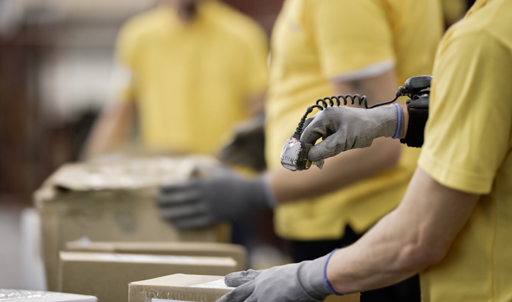Receive Focus insights straight to your inbox
5G, or fifth-generation wireless network technology, delivers speeds 100 times faster than current cellular data networks, with much lower latency (the time taken for devices to respond to each other over the wireless network). And because it uses less power than 4G, it offers a greener mobile network solution.
But 5G is not simply a faster wireless mobile network. The knock-on impact of this new technology will be far reaching and touch every aspect of our lives. It’s estimated that by 2035, 5G will contribute US$13.2 trillion to the global economy.
To understand what makes this technology so disruptive, consider how much has changed since the introduction of 4G a decade ago. Services that were previously impossible have become commonplace: e-hailing taxi services, high definition videos streamed to our phones and crystal-clear video chats that connect us to people down the road and across the world from anywhere, at any time.
Prior to 2010, when 4G became widely available commercially, we could barely imagine these things. Now we can’t imagine life without them. So what new killer apps can we expect in the coming 5G era? The conservative view is that 5G will simply amplify existing connections and communications. Bolder pundits have described a 5G future as one in which “everyone and everything is connected.”
For developed countries and modern cities, 5G promises to accelerate a technology growth trajectory that is already bringing far-reaching changes to the world of work and personal connectivity. Those in less developed countries will use 5G to gain access to world-class services that can be delivered over connected devices: from education and healthcare to financial and business applications.

Read more: Why the NFT artwork bubble burst
In the heady days of the NFT craze that reached a climax in 2021, jpegs were selling for the same price as an original Van Gogh, and a cat meme was worth more than a Boeing. However, following the fall in the value of crptocurrency, the Non-Fungible Tokens (NFTs) bubble burst and in 2023 the much-hyped new way of buying and selling digital artwork seems like a distant memory.
A new generation of business and industry
For business, 5G will accelerate the pace of change. Rapid developments in job automation, artificial intelligence and intelligent factories will require companies to assess their operations and business models to take advantage of productivity gains and remain competitive in a shifting technological landscape.
Manufacturing plants, for example, will increasingly be automated, monitored and controlled remotely in real-time, resulting in higher productivity and greater profitability for those companies prescient enough to respond appropriately. But the same shifting boundaries of possibility could equally leave technological laggards wondering why they are no longer able to compete.
This new generation wireless technology tops the list of trends highlighted in the Deloitte Technology, Media, and Telecommunications (TMT) Predictions 2020 report.
Paul Lee, Head of Global TMT Research, Deloitte, is unequivocal about the importance of 5G. “From a global perspective,” says Lee, “it’s the biggest trend that we see this year. And it’s not the consumer variants of 5G, but 5G for business; particularly for industry. And the reason why we think it is so important is because this is a technology that can improve the operational efficiency or the productivity or even business model of companies in most sectors out there.”
5G in factories
The impact of 5G needs to be understood not just in terms of linkages but also in terms of the speed and volumes of data that can be processed instantly across networks of connected machines that are geographically dispersed. This ability to process data as it’s produced has myriad commercial and industrial applications.
Companies across the world are already experimenting with 5G and piloting use cases in factories. For factories, the technology brings with it intelligent and smart facilities that operate on their own with no humans on the floor and can be monitored and operated remotely.
Manufacturing plants can install thousands of sensors that collect real-time data including temperature, air quality, energy use, performance of machinery and exact production output and quality of products. This means, production lines can be configured based on real-time data to push up output or that potential slowdown in production due to mechanical failure can be detected and addressed before disruptions.
For example, an automotive 5G manufacturing plant was launched, last year, in Germany by electric microcar company e.GO, Ericsson and Vodafone. It boosts automated processes of production, assembly and delivery of materials.
In England, electrical appliances giant Bosch launched its 5G factory. The smart factory uses a large number of sensors to collect real-time data, such as temperature, pressure and vibration, for monitoring and preventative maintenance. The real-time data can be accessed remotely.
5G will accelerate a broader use of technologies such as artificial intelligence and robotics and sectors such as manufacturing will be revolutionised dramatically.

If you look at a factory environment, the theme of the day is to automate what’s traditionally been done using manual processes. It means now you can bring robots into a factory environment that are able to work at a faster pace, that are able to produce what’s required with very high accuracy and without any interruptions. So that talks to efficiency, productivity, and profitability.
The logistics sector is set to be one of the first to be disrupted by 5G. “Where we think there’ll be the first deployments will be areas like ports, so they could be seaports or airports, and it’s just about tracking all the goods which are flowing through there, which is a big challenge,” says Lee.
So, for example, 5G could significantly change operations at the Durban port in KwaZulu-Natal - the busiest port on the African continent. There are hundreds of thousands of containers that pass through the port on a monthly basis, and tens of millions a year. There are massive complexities involved in identifying the right container, making sure it gets on the right truck and ensuring minimal disruption to the shipment of the container.
“5G makes it possible to ensure that the logistics as well as the movement of goods at the ports are all interconnected, including the utilisation of cranes, trucks and containers; because all these pieces of equipment could then be linked together through sensors,” says Moatshe.
“We are talking about IoT and the interconnectivity of devices in real-time that could be monitored at a remote location. Now that talks to accuracy, stock not being lost and goods arriving at business premises on time.”
The possibilities are mind-boggling: yellow metal, a kilometre underground in a remote rural mine, operated remotely in real time by a skilled technician in a modern city office; A Harley Street surgeon performing a procedure on a patient in rural Vietnam. In a 5G future, these scenarios will be unremarkable.
Will private 5G networks be the new table stakes for competitive advantage?
According to the Deloitte report, companies have two choices when it comes to implementing 5G in their business:
“To enable enterprise connectivity – and not just any connectivity, but ultra-reliable, high-speed, low-latency, power-efficient, high-density wireless connectivity – a company likely has two basic options. It can connect to a public 5G network. Or it can opt for a private 5G network, either by purchasing its own private 5G networks enterprise untethered infrastructure while contracting for operational support from a mobile operator, or by building and maintaining its own 5G network using its own spectrum.”
Deloitte predicts that “more than 100 companies worldwide will have begun testing private 5G deployments by the end of 2020”.
Enterprises will need to determine whether strategic or operational factors will compel them to invest in their own 5G network infrastructure.
Key factors for companies to consider in making this decision include that a private 5G network offers control – it be over users or data storage or a dedicated spectrum.
Companies for whom data security is paramount, or who face operational risks associated with unauthorised access to connected devices, may need to consider a private 5G network for security reasons, while multi-nationals with a global footprint – or indeed a global supply chain – may realise long-term cost benefits from investment in their own 5G infrastructure.
“When you have geographically-diverse businesses that need to be in constant communication with each other and if the spectrum is there as well as the willingness and the business case to invest in your own private 5G network, then one should have a look at that. It means that when you need to connect and communicate with your colleagues in other countries it can be done economically with low latency eliminating the need to fly people around,” says Moatshe.
Private networks will connect businesses’ systems, people, suppliers and customers with no significant latency, while also enabling real time storage of the data they produce.
However, companies assessing the benefits of a private 5G network will need to take into account total long-term costs of ownership, as well as whether network maintenance is really a core competence.
“If you set up that kind of network do you have the capability to maintain that network? Do you want to create that capability internally which could lead to raising your costs of doing business? or do you perhaps want to appoint an independent service provider that can give you comfort through a service level agreement that the network will operate effectively and efficiently,” says Moatshe.

Content on demand
As consumers, we are already using 4G to power a wide range of applications, ranging from navigation systems to video calling and music and video streaming.
5G is likely to improve these capabilities dramatically, bvirtually eliminating buffering for data-intensive content such as video.
“5G makes it possible to download large volumes of data and content at high speeds in real time, thereby reducing latency. Latency is essentially the time that it takes for content to be downloaded onto a device through cloud technology from hosting infrastructure which is why you find when you are on say 3G or even 2G you experience delays caused by buffering,” says Moatshe.
So essentially the content takes too long to be downloaded fully before it can be consumed. 5G makes it possible for that content to be streamed onto your device in real time thus eliminating the need for download.”
Will 5G reduce the costs of data for consumers?
Although it’s still too early to predict 5G pricing for consumers, the cost per gigabyte of data carried on a 5G network is far lower than 4G. In fact, the consensus is that over the useful life of a network, the cost of data carriage on 5G could be reduced by up to 90 percent. That’s good news for individuals and business alike, particularly in developing economies where broadband is currently out of reach for millions of poorer consumers.
“If you are a consumer of data then even if prices rise in terms of the cost and that's added on by the operator, you're still far better off. So fully deployed 5G which requires increased capillarity of networks does give you the benefit of a 90% price reduction per gigabyte of data. So, you're looking at about 5 cents to 10 cents per gigabyte,” says Lee.
Investing in 5G infrastructure
Businesses looking to adopt 5G should be careful not to repeat the mistakes that were made in the rollout of previous generation wireless networks.
“What has been happening on the African continent is that the speed at which the infrastructure is being rolled out exceeds consumer adoption rate of the technology thus resulting in utilised capacity and an extended investment recoupment horizon by the network operators” says Moatshe.
Business is the biggest user of capacity that’s available in networks from 3G to 5G. And 5G cannot simply be rolled on existing networks – it requires an entirely new infrastructure.
“There is an estimate that by 2025, up to US$60 billion needs to be invested in network infrastructure and 20% of that is going to be in 5G which could result in massive spin-offs and opportunities for local businesses,” says Moatshe.
“Now that means for capital to be invested by the network operators in such infrastructure, there has to be a market that is willing to pay for the use thereof thereby justifying the business case.”

Will 5G take our jobs?
No discussion about 5G would be complete without mentioning its impact on jobs.
The automation of processes, especially in the manufacturing sector, risks making certain types of human work redundant. Aided by the enhanced data flows made possible by 5G, networked robots or artificially intelligent systems will undoubtedly be able to complete certain tasks better than humans, and in a fraction of the time.
Labour-intensive sectors like agriculture, manufacturing, mining, construction and textiles will be among the earliest to benefit from 5G technologies. But enhanced productivity will likely come at the cost of easily automated jobs – at least in the short term. It will therefore be incumbent upon these industries – ideally in partnership with governments, labour unions and other stakeholders – to use this technology dividend to fund retraining programmes, equipping workers with the skills they need to thrive in a more automated work environment.
The World Bank’s World Development Report 2019 notes that “Digital technologies are enabling firms to automate, replacing labour with machines in production, and to innovate, expanding the number of tasks and products. The future of work will be determined by the battle between automation and innovation.”
READ MORE: Preparing society for an AI-infused future
So while the 5G era will no doubt disrupt the labour market and make certain skills redundant, over the longer term job losses will likely be offset by new employment opportunities. The World Economic Forum (WEF) estimates that 5G technology will bring with it some USD$3.6 trillion in economic output and 22.3 million new jobs by 2035.
It’s also important to put the extent of expected job losses into perspective. “The number of robots which are being sold this year is one million globally,” says Lee. “So, if you think of the size of the global workforce, which is billions, a million robots is not significant and what they tend to be doing is really simple tasks.”
“Science fiction has robots which are humanoid and compete. That's not the reality. The reality of a robot is repetitive tasks being done. So a calculator is a robot; a washing machine is a robot. You have robot hoovers; they do very simple tasks and they remove chores from people. In logistics centres, you've got robots which carry packages between different parts of a logistics factory. That's it. They do one task and they do it pretty well.”
So, what now for the unskilled employees who can be replaced by these service robots?
“I think the challenge is how then do we take that portion of our population and repurpose them? It comes down to education. So now, could we amplify the repurposing of that skill in a mass roll-out of teaching people how to code and expose them to this technology?” asks Moatshe.
Whether or not we are able to answer this question, 5G is here and its impact is inevitable. The sooner we understand the implications of this fact, the better we will be able to manage the pitfalls and reap the rewards of this revolutionary technology.
About the author

Lenyaro Sello
Digital content specialist
Lenyaro is a key member of Investec's Global Content team, based in Johannesburg, who focuses on relevant and topical issues for internal and external audiences including clients. She is a well-travelled multi-skilled multimedia journalist who previously held roles within eNews Channel Africa (eNCA) and Eyewitness News (EWN).




